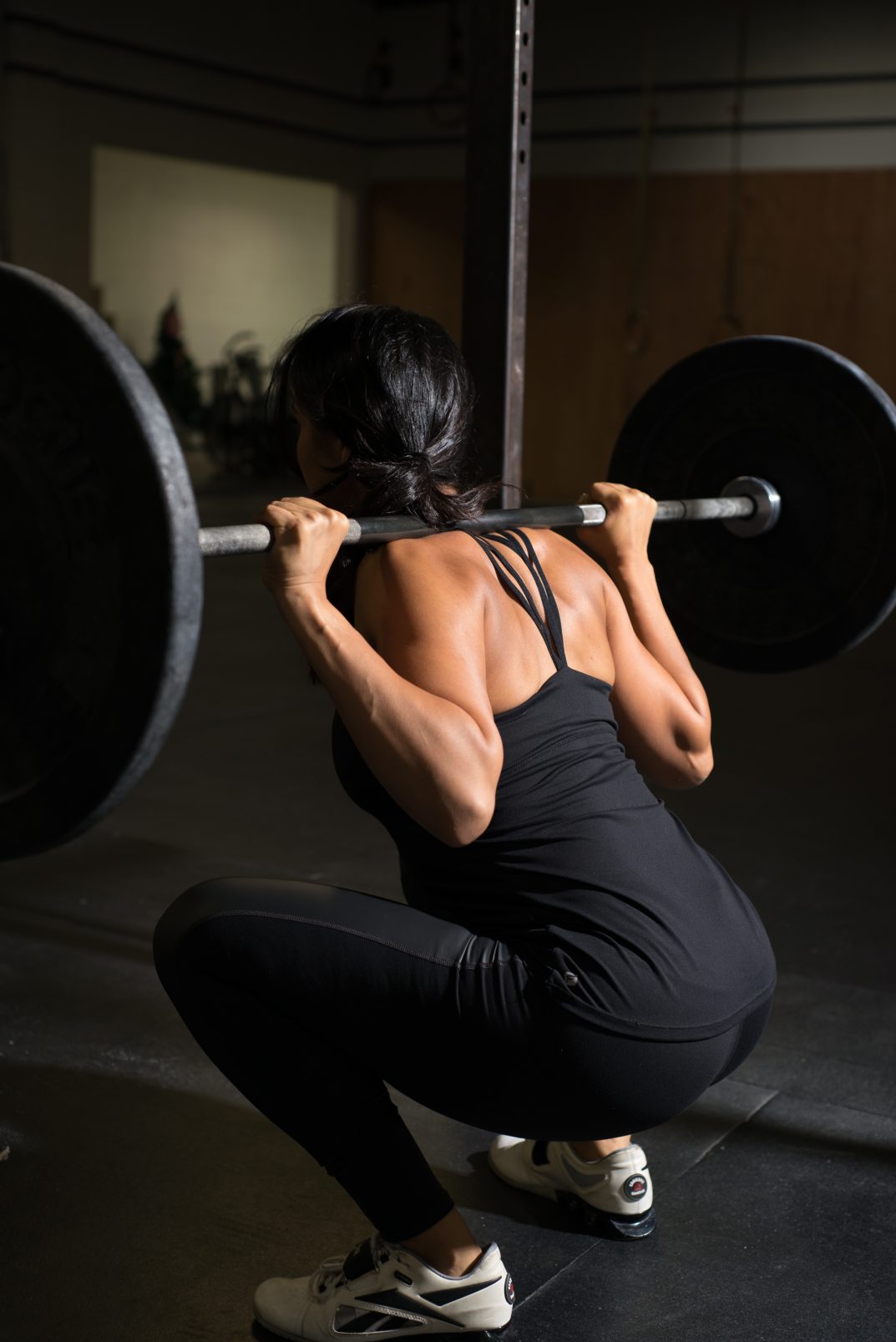Note to self: It’s barbell training month over here on Barbell Pilates so to catch you up, start here.
The right to barbell squat is earned, not given. Even lifelong athletes have to work their way up to barbell squatting (they may just do it quicker than most), so it’s worth taking your time to learn to do it properly.
Here are some key points to consider so you don’t sh*t a brick attempting a good squat.
1) Choose your squat wisely
There are various reasons to choose front or back squats and most of it is entirely individual. You have to consider your level of mobility as well as what muscles you’re trying to train because the bar placement does have an impact on this movement.
The short version:
Front squat: Quad and upper back dominant. Needs shoulder mobility, lat activation, core stability, spinal stability and ankle mobility. If you’re doing traditional front squat in the rack position, wrist mobility is also required.
Back squat: Glute and hip dominate. Requires low back stability, hip mobility, ankle mobility, shoulder mobility. Strong posterior chain.
Clearly the demands of the front squat are higher than a back squat, which is why it’s entirely individual on where you start. However, I’ve had greater success coaching women how to front squat first, especially if I take the wrist mobility element out of the occasion (see point #2).
2) Hand placement
How you hold the barbell, be it in a front or back squat, matters a ton. You’re likely to play around with hand placement during your squat career so don’t marry yourself to one way because it may change over time.
Back squat: Narrow vs. wide
Going super wide, as in nearly touching the plates, doesn’t make sense if moving heavy loads and squatting efficiently is your goal. In the back squat in particular, you need a lot of thoracic mobility and lat/core tension to make this lift smooth and efficient. A super wide hand placement puts you in a dangerous position to move heavy load. You risk toppling over or turning it into a good morning exercise, or squatting with your low back. Icky.
A narrorw grip allows you to create a “shelf” for the barbell to rest on, creating optimal tension in the lats, and the ability to drive the chest forward and proud. Naturally, this grip requires good shoulder and spinal mobility so if you lack that, address mobility first.
Coach Eric Cressey has a great tutorial on this that is worth 2 minutes of your time. Watch it below:
Front squat: Cross Rack vs. Front Rack
The front rack position is a lot tougher to get into because of the demands on the wrists, and not very beginner-friendly for the majority of people. This is why I typically coach the cross rack position first, and progress clients to the traditional front rack position if their goals require it. Here’s a video of one of my client’s crushing it with the cross rack position.
https://www.instagram.com/p/BfkMxvJhh1d/?taken-by=trishdfit
Most of my clients are general population women. They’re not doing CrossFit or Olympic weightlifting so there’s no need to take them to front rack unless they really want to.
Nevertheless, it’s a tricky position to get into because the bar wants to choke you out. The easiest way to get your mind off the choking part is to focus on two key elements:
-Maintain core tension
-Keep those elbows up
If your lats are super stiff and tight, keeping those elbows up is tough. This is why rolling out and doing a proper warm-up is so critical before you start training. You can find a detailed, comprehensive warm-up plan in my ebook The Warm-up Guide for Optimal Results.
3) Know what core engagement feels like
Moving heavy loads takes a lot of you, so you better know how to maintain rock solid core engagement from start to finish. This all starts with proper breathing, and that begins before anyone steps into the squat rack.
First, I get people to learn lateral breathing so they can feel what it’s like to fill up the entire torso with air. This is how they “brace” their abdominals before a heavy lift. To get a full breathing tutorial check out my video on lateral breathing from the Pilates FloWOD online course.
Next, I take them into dead bugs, which shows them what keeping core tension is all about. When we get to the squat rack I cue them to “Suck in as much air as possible and hold it” while they’re moving down and up. We do this a few times to get them comfortable with the breathing pattern. Here are two dead bug variations from my upcoming Strong Body Fitness Guide program:
Finally, during the squat itself is when I cue them on maintaining core tension. I tell them to “brace your belly like your dead bug” or “find your deadbug” and automatically they creat
e tension in their entire torso. See why I make dead bugs happen beforehand? It gives them a point of reference and I don’t have to say something meaningless like “keep your abs tight” because it just makes them suck in their stomach (not what I want).
If you can’t breathe right then you can’t barbell squat. That’s my rule.

